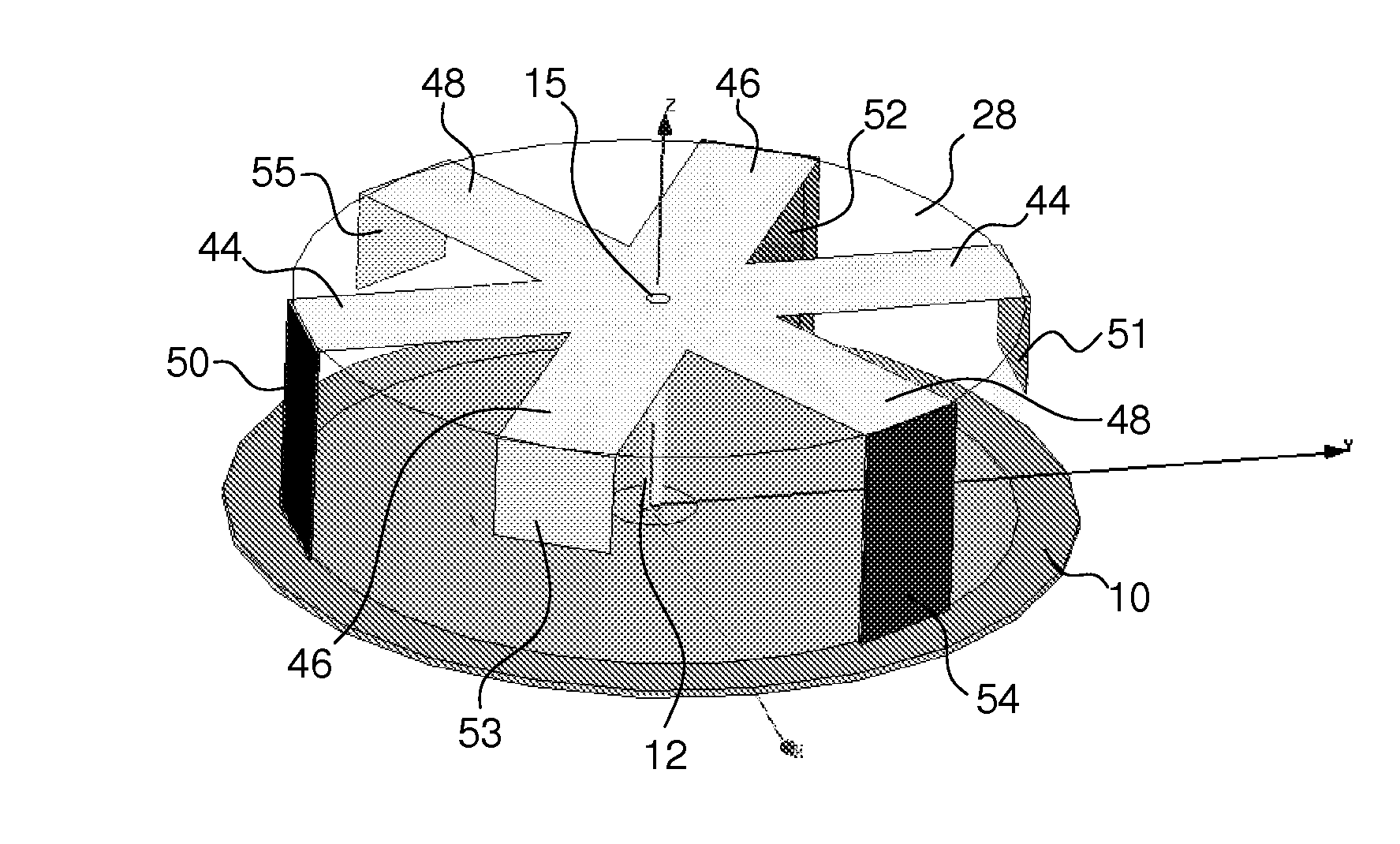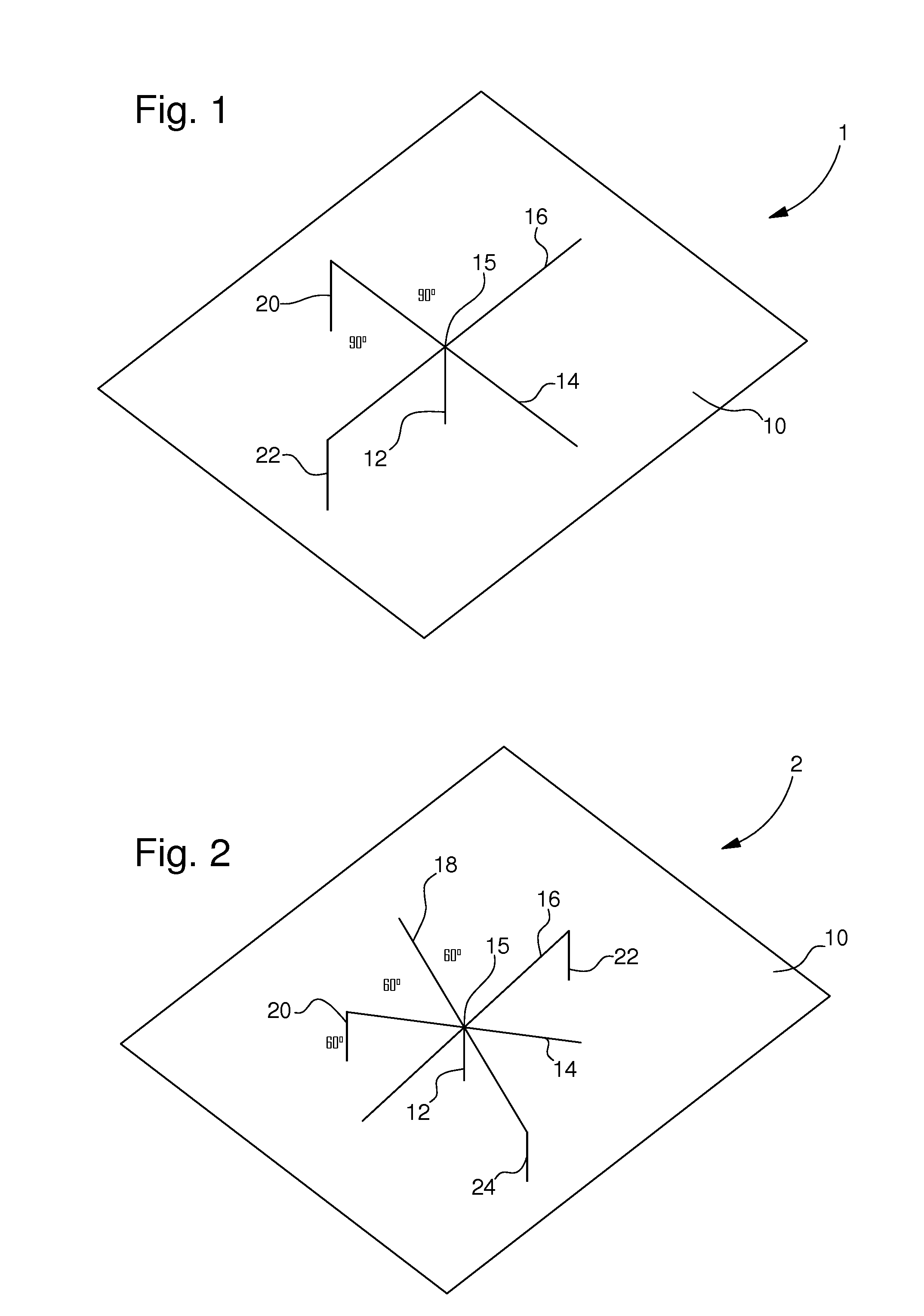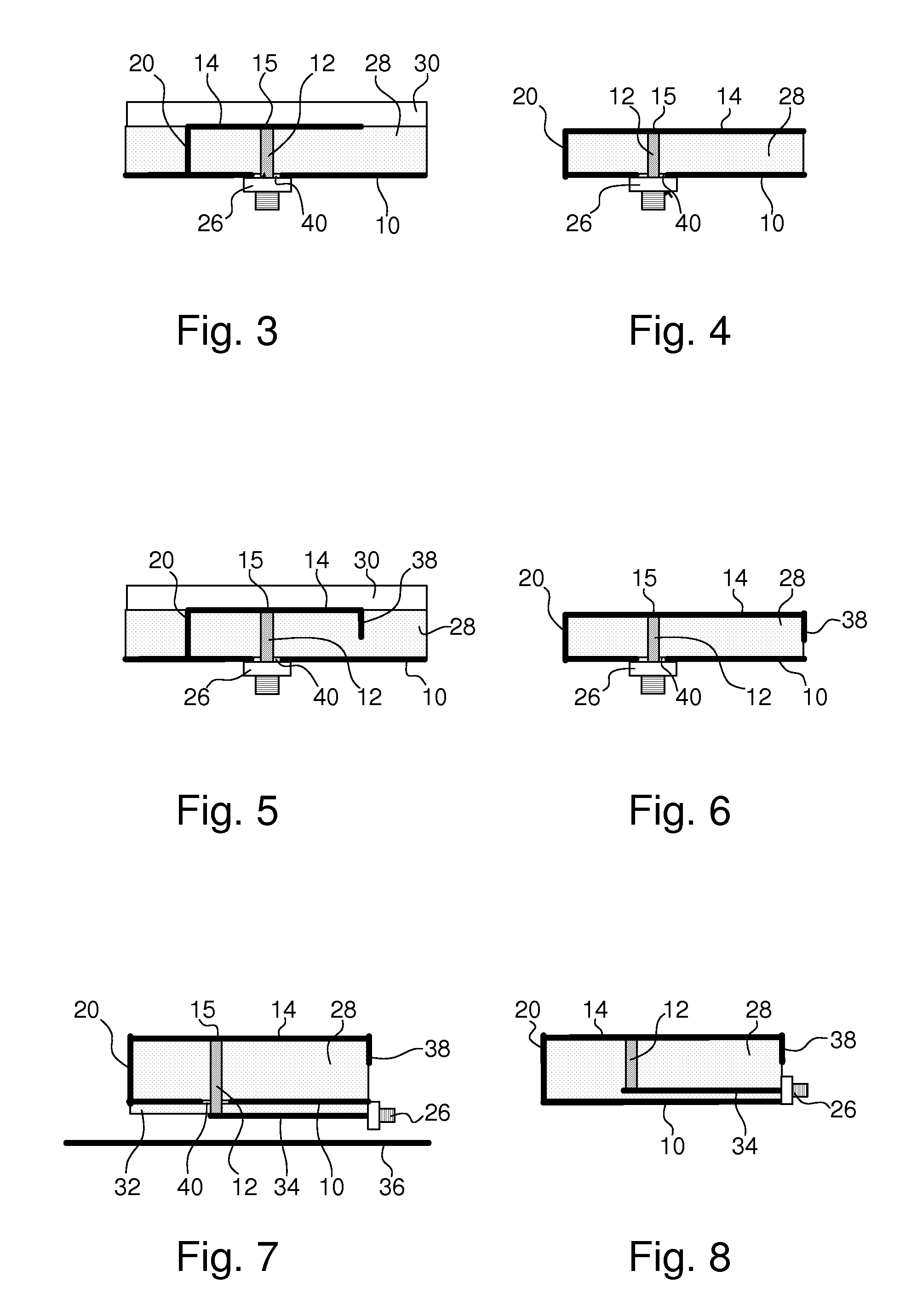Omni-directional antenna for mobile satellite broadcasting applications
- Summary
- Abstract
- Description
- Claims
- Application Information
AI Technical Summary
Benefits of technology
Problems solved by technology
Method used
Image
Examples
Embodiment Construction
[0064]The present invention aims to provide an antenna for mobile satellite communication providing a maximum coverage at an elevation ranging between 20° to 60°, while still ensuring a good level of directivity at a range of 5° to 15° of elevation in order to receive signal broadcasting by terrestrial repeaters. Further, the antenna according to the present invention may be able to receive simultaneously a vertically polarized signal at 5° to 15° of elevation and a dual circularly polarized signal at 20° to 60° of elevation.
[0065]The antenna 1 according to FIG. 1 comprises a ground plane 10 and a first radiating element 14 as well as a second radiating element 16. The two radiating elements 14, 16 are designed as transmission lines. They both intersect at a feeding point 15 that coincides with an end section of the feed line 12 extending substantially parallel to the surface normal of the ground plane 10.
[0066]In this embodiment, the two transmission lines 14, 16 extend at an angle...
PUM
 Login to View More
Login to View More Abstract
Description
Claims
Application Information
 Login to View More
Login to View More - R&D
- Intellectual Property
- Life Sciences
- Materials
- Tech Scout
- Unparalleled Data Quality
- Higher Quality Content
- 60% Fewer Hallucinations
Browse by: Latest US Patents, China's latest patents, Technical Efficacy Thesaurus, Application Domain, Technology Topic, Popular Technical Reports.
© 2025 PatSnap. All rights reserved.Legal|Privacy policy|Modern Slavery Act Transparency Statement|Sitemap|About US| Contact US: help@patsnap.com



